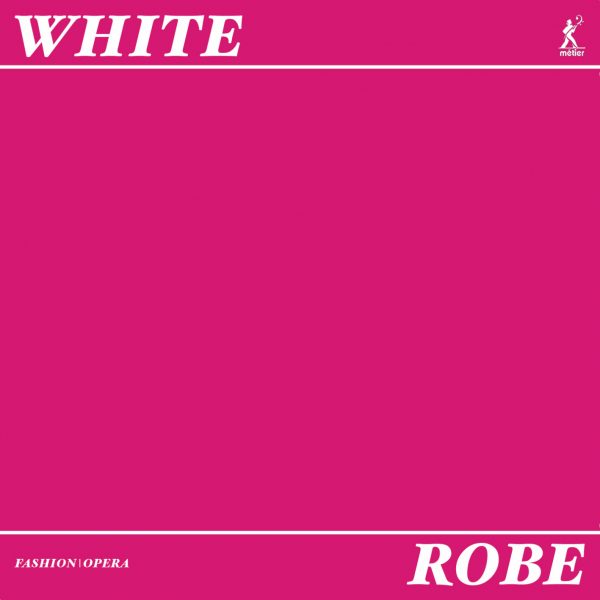Avant-Scène Opéra
Under the flashy pink dress of this record, which for a moment gives rise to fear of a musical avatar of pop art or a flashy marketing approach, hides an opera that is anything but flashy. It takes more than a moment to begin to glimpse the outlines of this unusual artistic object.
Classified by the composer as “Fashion opera” by virtue of costumes designed by three milliners, a choreographed opera involving three dancers and two actors, Robe is above all, on record, chamber opera, bringing together in all and for all four singers and two instrumentalists.
Alastair White is also a writer and was responsible for writing the libretto. In the absence of translation and especially for its strong content of Symbolist poetry brimming with puns and image associations, this text will remain hermetic to anyone who is not an expert in British language and culture. Without reading the synopsis, it is difficult to understand what is going on in this post-truth world where the difference between real and virtual is abolished, where artificial intelligence reigns. But although kept in a latent state, the dramaturgy is not inert and it even seems to crystallise on contact with the music.
The young Scots – the characters of Beira and Neachneohain, who convince the cartographer Rowan to infiltrate the mind of an autonomous artificial intelligence named Edinburgh – betray the geographical origin of the thirty-something composer who decidedly thinks outside the box by adopting a resolutely serial language. If certain passages oscillate between Webernian pointillism and Boulézien melodic profiles, White favors an embodied lyricism, and his vocal writing flexibly feeds a number of solos, duets and trios often treated a cappella or with the complicity of a flute which Jenni Hogan manages in a controlled way to make a character in its own right.
The female quartet undoubtedly plays in favor of this beautiful musical homogeneity, but not at the cost of vocal uniformity. Sarah Parkin’s rather robust – sometimes a little rough – soprano playing the soldier Beira responds to the much clearer and airy tone, in a higher range, of Kelly Poukens. The mezzo-sopranos produce another type of contrast, between Rosie Middleton who develops most of her power in the treble to the detriment of a slightly dull bass and Clara Kanter whose greater homogeneity and additional sweetness naturally suggest a younger character. The idea of associating Beira and Neachneohain to represent the virtuality of Edinburgh works musically very well and contributes to the vocal densification in the second part of the opera, where, however, the use of an almost recto tono psalmodic singing alternates with a polyphonic tendency. The same variety of textures enlivens a piano that is sometimes percussive and sometimes resonant and it is not uncommon for Ben Smith to momentarily abandon the keyboard to play woodblocks with fleeting accents of Chinese opera. With the help of the performers, Alastair White infuses this virtual dramaturgy with a musical intensity that succeeds in giving it substance, a feat that could not better correspond to the theme of this opera.
@divineartrecordingsgroup
A First Inversion Company
Registered Office:
176-178 Pontefract Road, Cudworth, Barnsley S72 8BE
+44 1226 596703
Fort Worth, TX 76110
+1.682.233.4978












